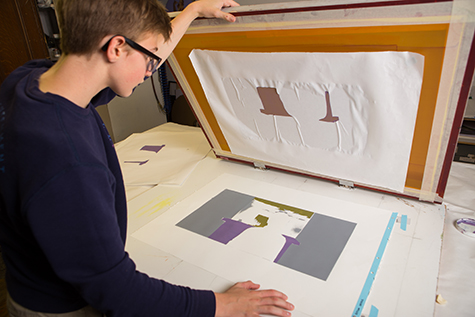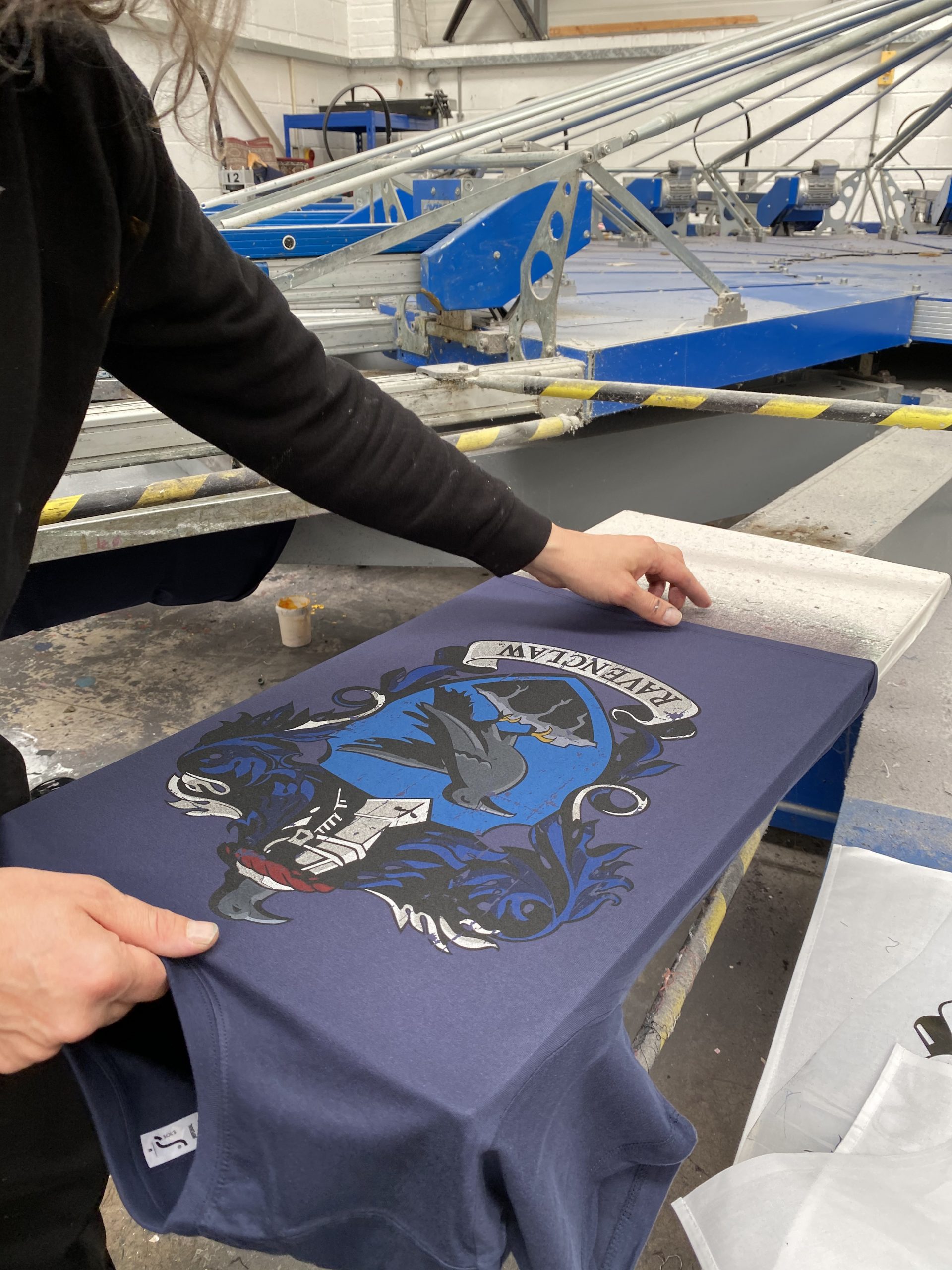The Essential Guide to Comprehending Screen Printing and Its Versatile Makes use of
Screen printing has an abundant background that dates back to ancient times, developing into an advanced strategy made use of across different industries today. This guide checks out the complexities of the screen printing process, outlining its applications in advertising, home, and style décor - 10:9 Design reviews. Understanding these basics can open creative capacity for both business and creative projects. The complying with areas will certainly reveal crucial pointers and methods to boost one's screen printing ventures
The History of Screen Printing
Although screen printing has roots that trace back centuries, its advancement reflects the artistic and technological advancements of various societies. Originating in old China, the method was at first utilized for enhancing fabrics and later spread to Japan, where it became integral to Ukiyo-e woodblock printing. The method shifted to Europe in the 18th century, where it got appeal among artisans and commercial printers. The innovation of picture emulsion in the 20th century revolutionized screen printing, permitting more elaborate designs and higher effectiveness. Artists like Andy Warhol additionally propelled its popularity, making use of the medium to develop legendary works that combined commercialism and fine art. By the late 20th century, screen printing had actually established itself as a versatile technique, utilized in vogue, advertising and marketing, and art. Today, it continues to progress, incorporating electronic modern technology and broadening its applications across different industries.
The Screen Printing Refine Explained
Screen printing changes imaginative visions right into substantial designs with a collection of precise steps. A picture is developed and then transferred onto a screen, commonly made of great mesh material stretched over a frame. A light-sensitive emulsion is related to the screen, which is revealed to light, hardening in areas not covered by the image. After rinsing the unhardened emulsion, a stencil is developed.
Next off, the screen is positioned over the substratum, whether it be fabric, paper, or another product. Ink is then pushed via the open locations of the pattern using a squeegee, depositing the style onto the substrate below. This procedure can be repeated for numerous shades, requiring different screens for each hue. The published item is cured using warmth to ensure the ink sticks effectively, resulting in a long lasting, vivid style all set for usage.
Types of Screen Printing Techniques

Additionally, specialty methods, such as discharge screen printing, remove color from the material to produce softer prints, while aluminum foil screen printing applies metal foil to achieve a glossy finish (10:9 Design Screen Printing). Each strategy offers distinctive qualities, accommodating different creative demands and production ranges, eventually increasing the possibilities within the screen printing domain
Applications of Screen Printing in Various Industries

In addition, the signs and marketing fields utilize screen printing for creating eye-catching displays and banners. This approach enables bold shades and intricate styles that record attention. In electronic devices, screen printing is employed for applying conductive inks to circuit boards, essential for element links. The home decoration market accepts screen printing to generate unique layouts on textiles and wall surface art. On the whole, screen printing acts as a critical device throughout diverse fields, improving products with customized and visually attractive graphics.
Tips for Successful Screen Printing Projects
While taking on a screen printing task, cautious attention to detail can considerably boost the last end result. Choosing high-grade products is vital; this includes the screen, inks, and substratums. Using appropriate mesh matters can influence ink deposition and detail resolution. Prep work is just as important; thorough cleansing of screens and appropriate direct exposure times ensure crisp prints.
Next off, precise enrollment is essential for multi-color prints. Utilizing positioning tools can aid attain exact layering. Furthermore, screening prints on scrap products prior to production helps identify potential problems without throwing away sources.

Regularly Asked Concerns
What Products Are Finest for Screen Printing on Material?
Cotton and polyester blends are excellent for screen printing on textile as a result of their resilience and ink absorption. Additionally, specialized textiles like silk or canvas can create distinct appearances and surfaces, enhancing the general design top quality.
Just how Do I Tidy and Maintain Screen Printing Devices?
To clean up and maintain screen printing equipment, one should on a regular basis wash screens with ideal solvents, examine squeegees for wear, oil relocating parts, and shop all items in a completely dry, dust-free atmosphere to extend their life expectancy.
What Are the Ecological Effects of Screen Printing?
Screen printing can have substantial ecological influences, including chemical waste from solvents and inks, water usage during cleaning processes, and energy usage. Lasting practices and green materials are important for minimizing these adverse effects.
Can Screen Printing Be Done in your home Properly?
Screen printing can be successfully done at home with the best products and techniques. Hobbyists can develop high quality prints, though success relies on their ability level, devices, and understanding of the procedure included.
What Are the Prices Related To Starting a Screen Printing Business?

Beginning a screen printing organization entails read more costs for devices, materials, and office. Initial costs commonly range from a couple of hundred to numerous thousand dollars, depending upon the scale, top quality of machinery, and desired production ability.
Screen printing has an abundant history that dates back to old times, progressing into a sophisticated method made use of across different industries today. Another strategy, rotary screen printing, uses round screens, facilitating continuous printing on textile rolls, thus enhancing performance for massive manufacturings. In addition, specialty techniques, such as discharge screen printing, get rid of color from the fabric to produce softer prints, while foil screen printing applies metallic foil to achieve a shiny coating. In the style field, screen printing is widely made use of to create lively layouts on clothing, allowing brand names to showcase their distinct styles. Cotton and polyester blends are perfect for screen printing on textile due to their durability and ink absorption.